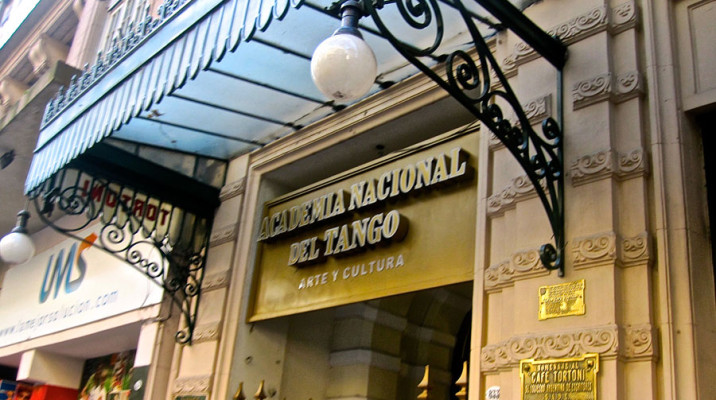
I take the turn-of-the century elevator to the second floor (I never miss an opportunity to touch its curvy iron interior) and look for the course in which I registered. He does not believe in the abundant mythology passed as history, he writes and teaches what he has personally researched and documented. His name is Enrique Binda. He is best known as the co-author of a classic book: “Tango en la sociedad porteña 1880-1920.”
A few notes from class (I missed the 3 previous classes) for those of you tango music connoisseurs. But first let me share a cultural observation. I arrived 10 minutes late (oops…) expecting Binda to frown at me. But he stops the class, gets up and cames towards me, introduces himself and welcomes me.
He continues talking about the musical quality of first tango canción (sung tango), “Mi Noche Triste”, recorded by Gardel with accompaniment of guitars. We tend to think of it as a great tango but the country sound of the music needed to evolve into tango music. It took three years for a tango song to have musical quality. This first quality tango song was Milonguita, in 1920. We listened to the original recordings of both “Mi Noche Triste” and “Milonguita.”
Binda proved his point. Piracy of recordings is not a contemporary phenomenon. It existed as early as 1915. A factory located in Porto Alegre, Brasil, recorded with its own label the work of Argentine artists. Bringing a few of those old pirated records, Binda let us touch them and inspect the labels.
He then played for us “El Rodeo” (1920 recording) with Delfino on piano and Fresedo on bandoneon, “Sollozos” (1922) by Fresedo’s orquesta with Roccatagliata on violin and Cobian on piano. Binda guided us to notice the several instrumental solos in this piece. Some of the novelties that Fresedo introduced were credited to De Caro – who came on the scene later.
From the fall of 1922 we listen to “Almita Herida” (Fresedo’s orquesta, featuring a solo by Cobian), “Firulete” (1922) (we hear new sounds, i.e. cymbals which Fresedo later discarded). Binda points out that Fresedo explores new “timbres,” even though there is belief that tango had to wait until Salgan and others to do so. From the Orquesta Tipica Flores he played “Buena Mano” (1922), which did not have the esthetic sense of the balances, tensions and richness of Fresedo.
I am amazed at the high quality education that Binda is imparting with a boom box that has to be adjusted constantly for quality of sound, at all the research he has done to publish a solidly documented history of tango. I know he did it without a grant, in his own time, at his own expense…
I walk out wishing that the thousands of foreign dancers who go to Buenos Aires could attend workshops on tango music and history of music of this caliber.

